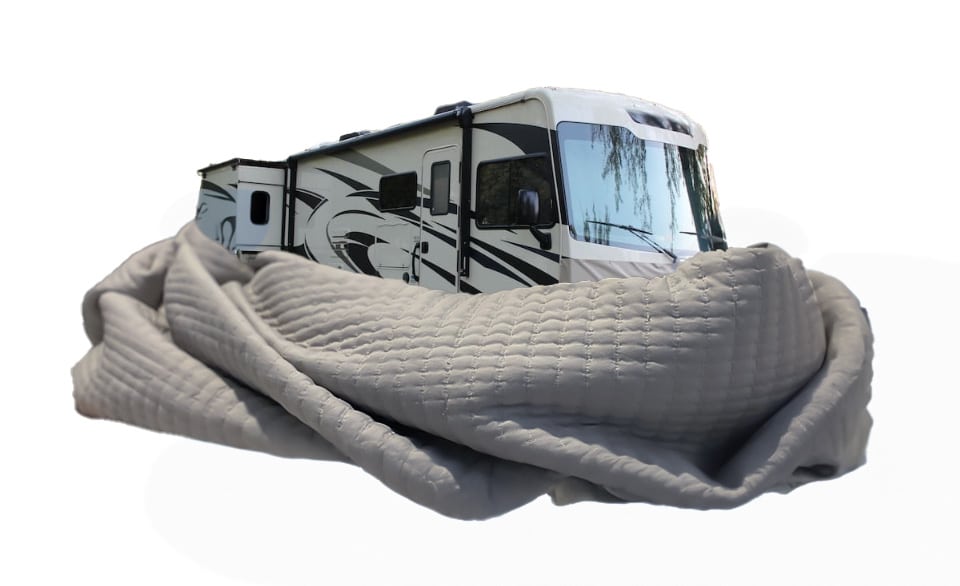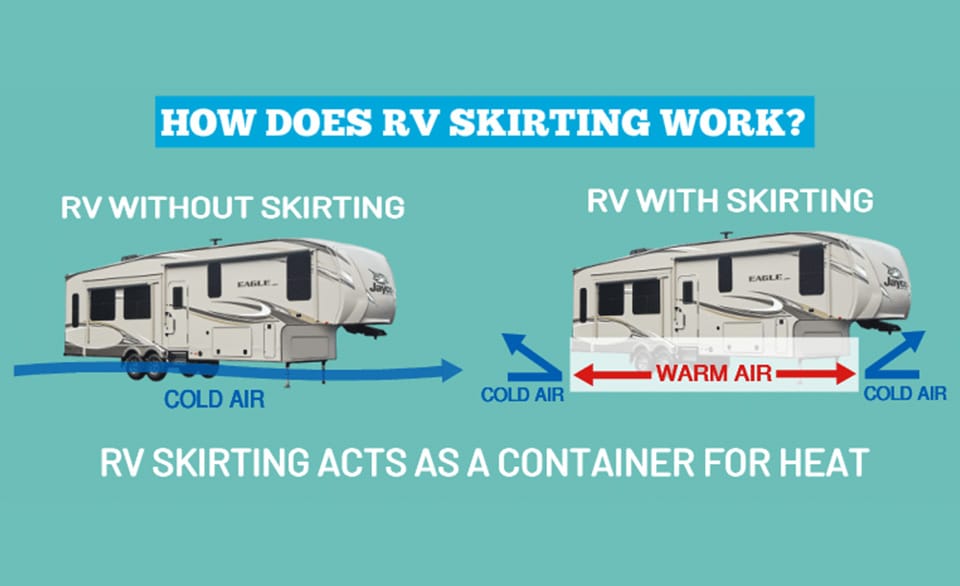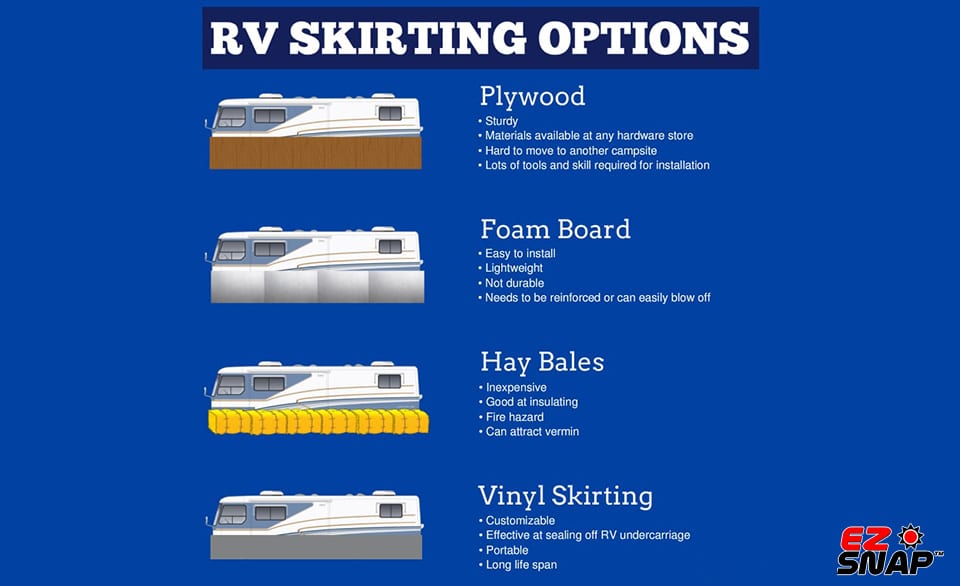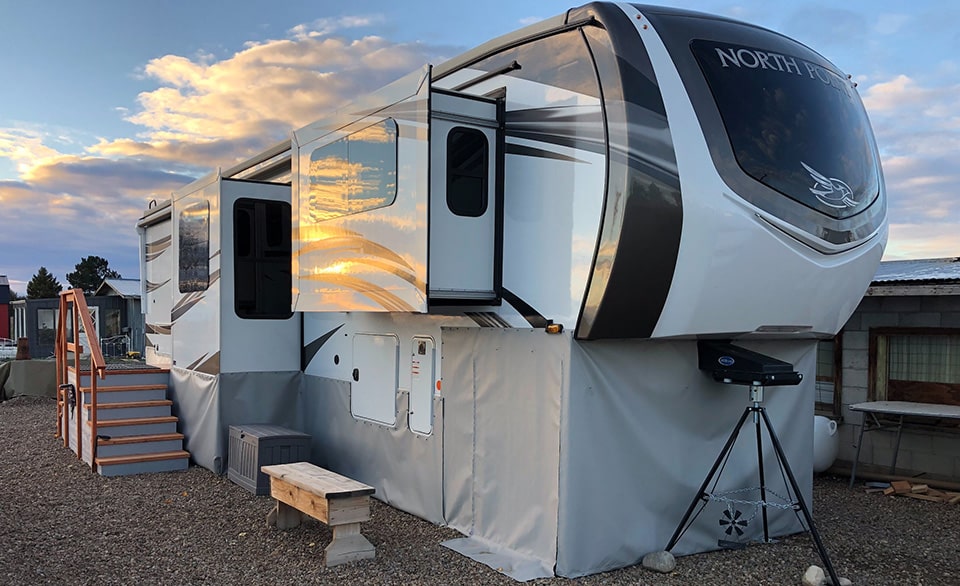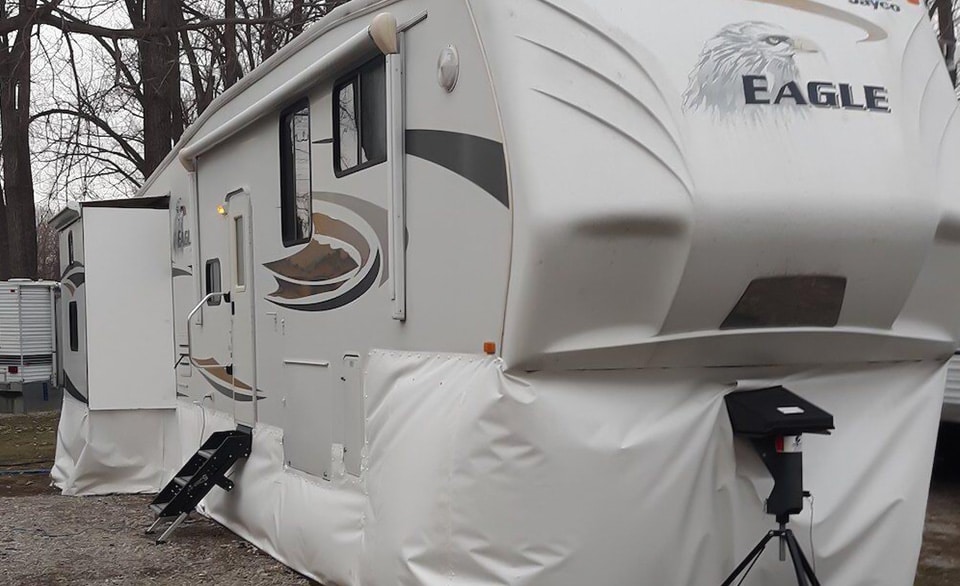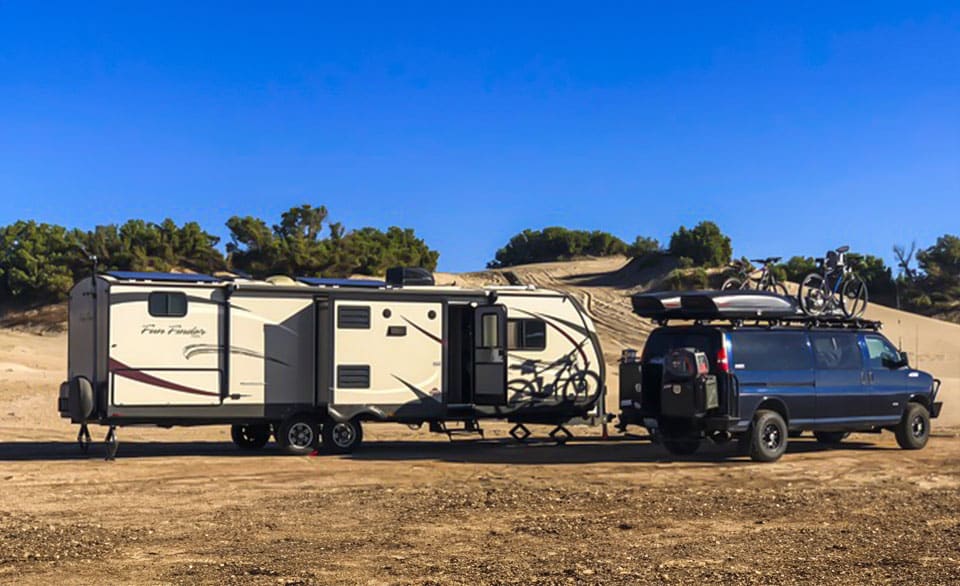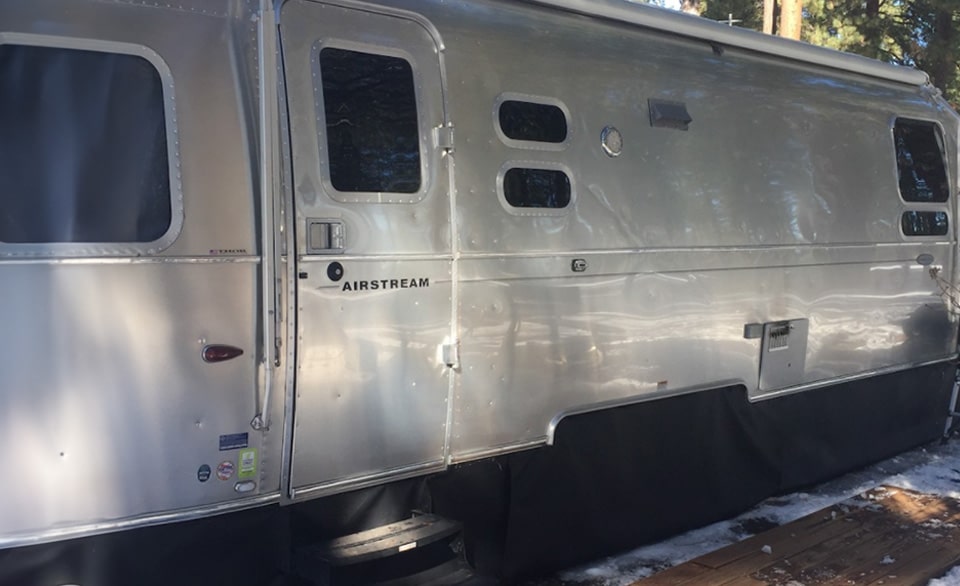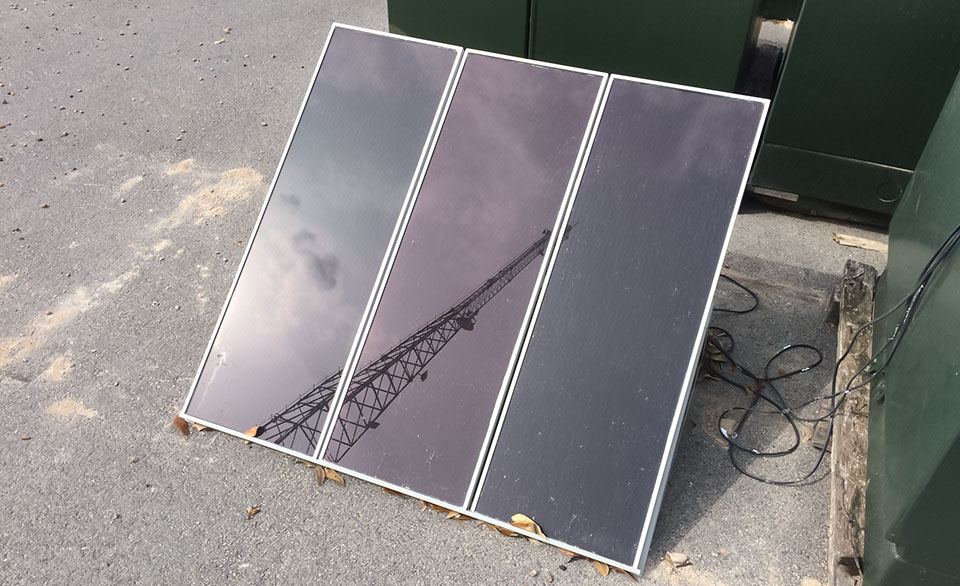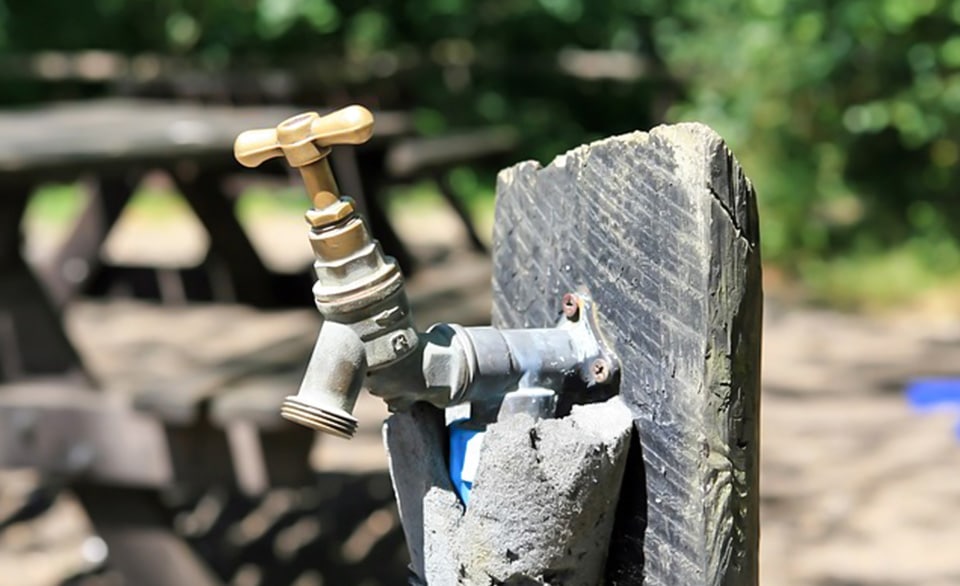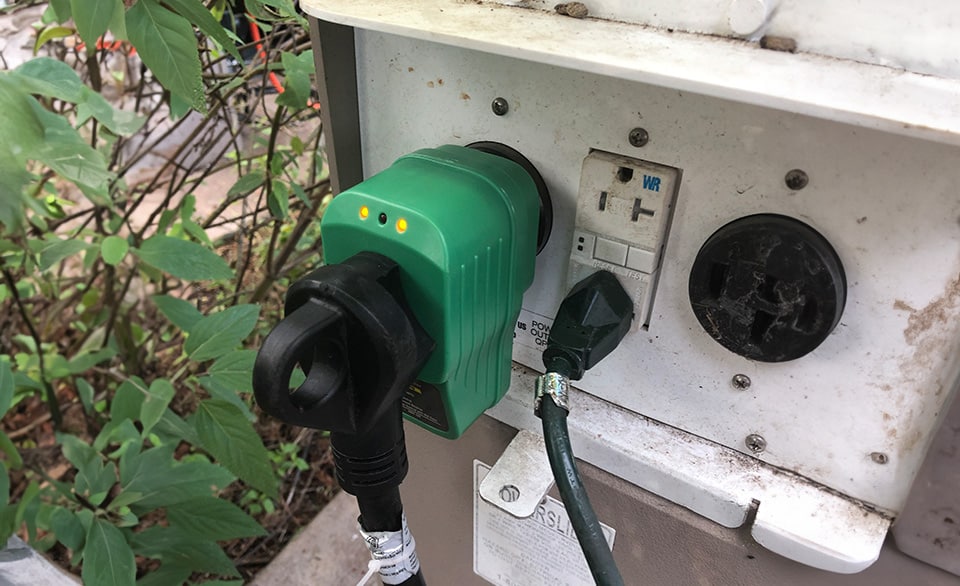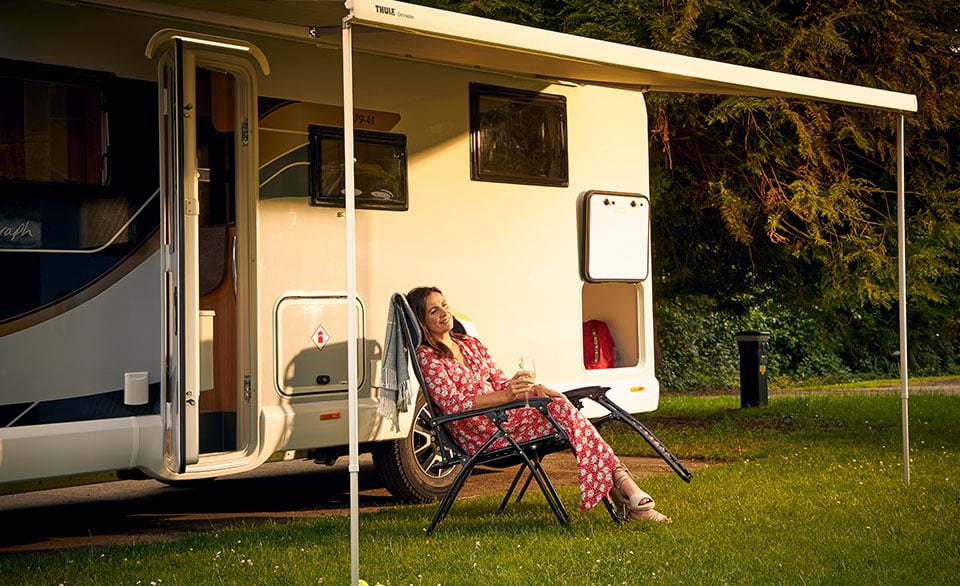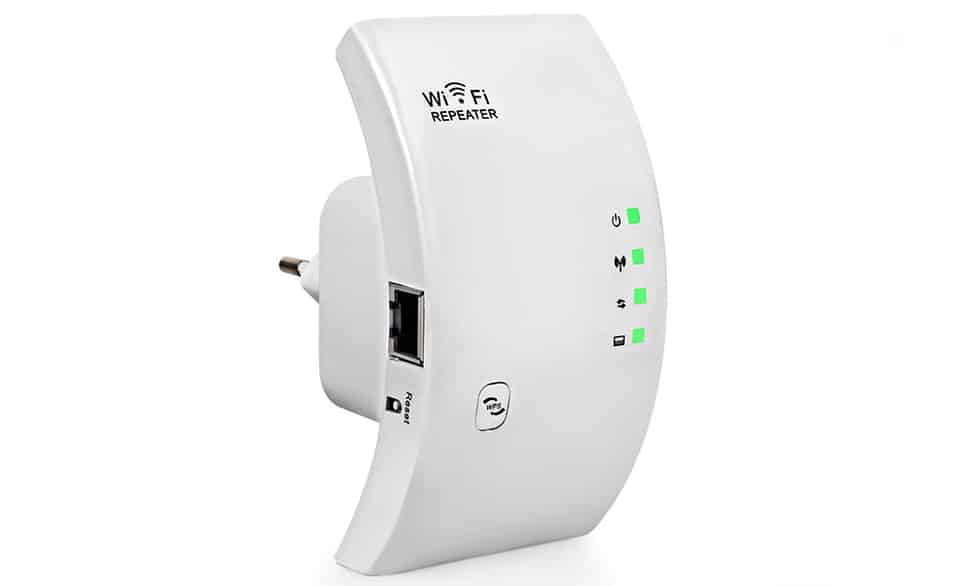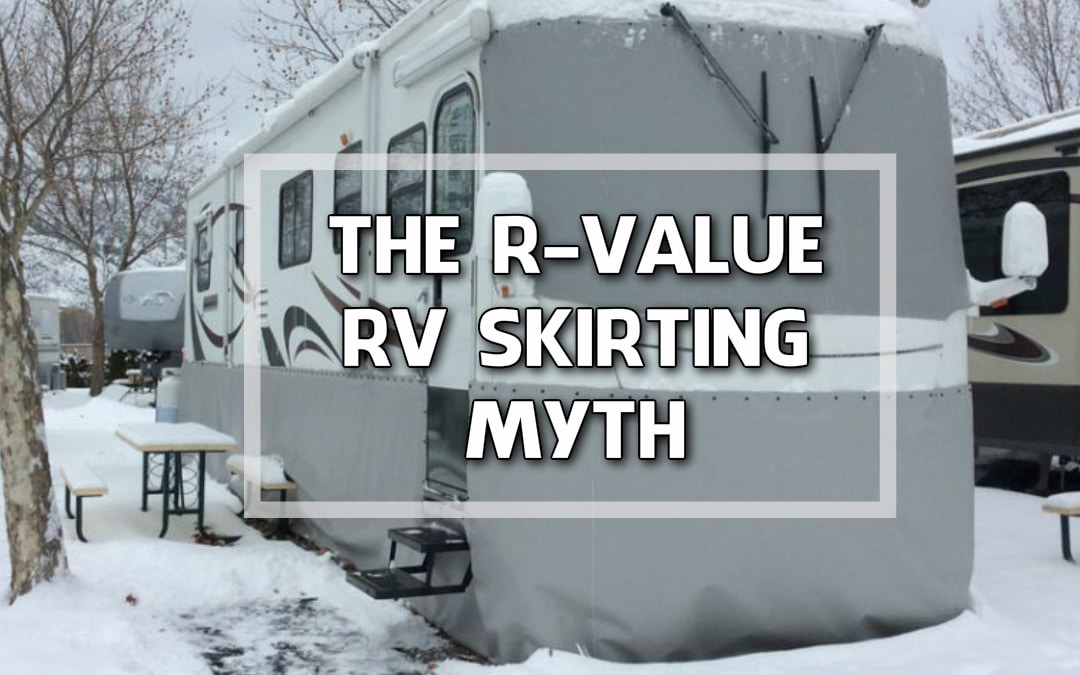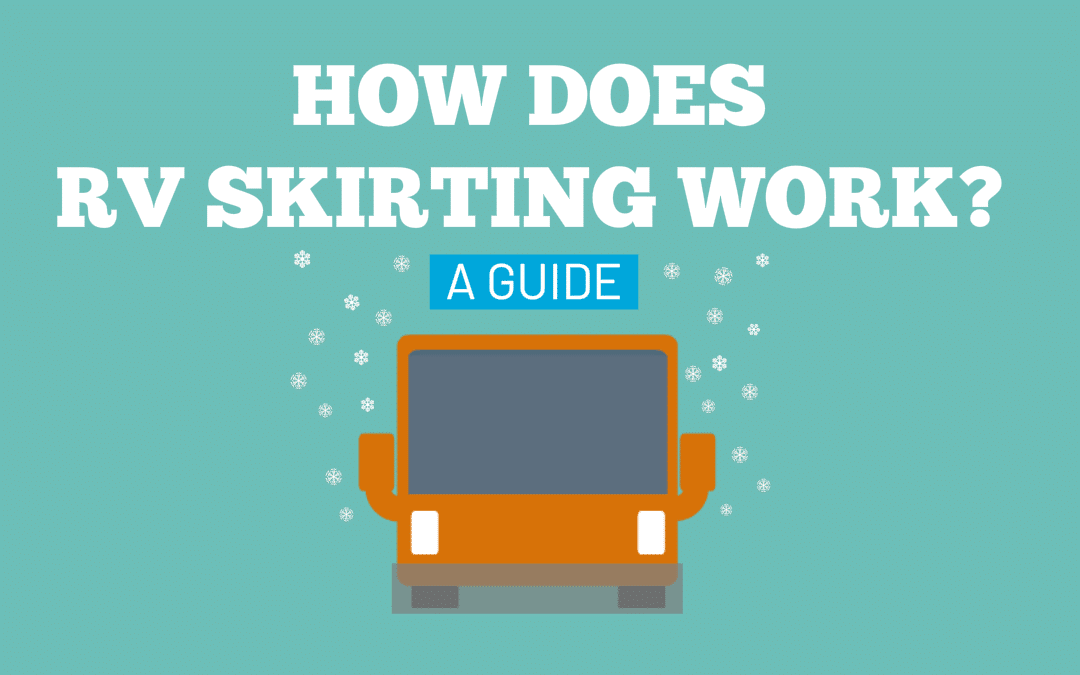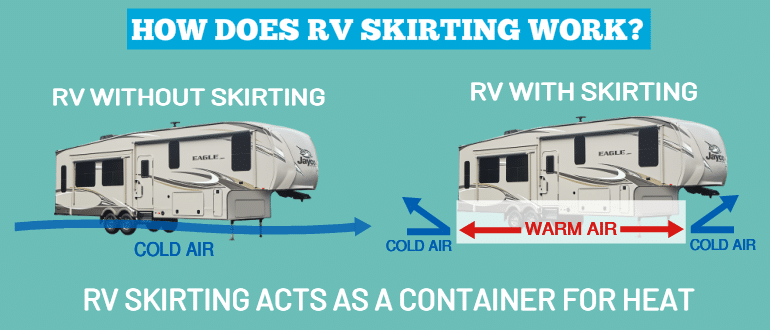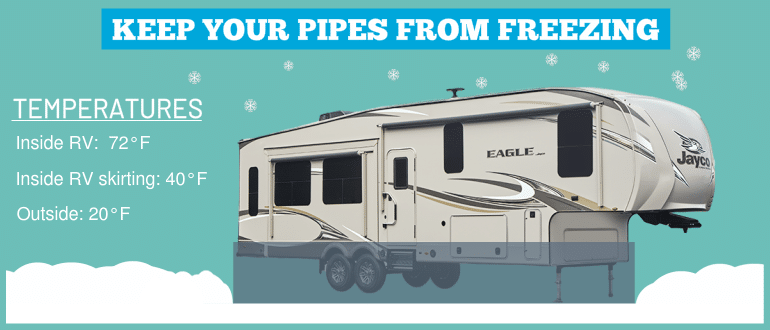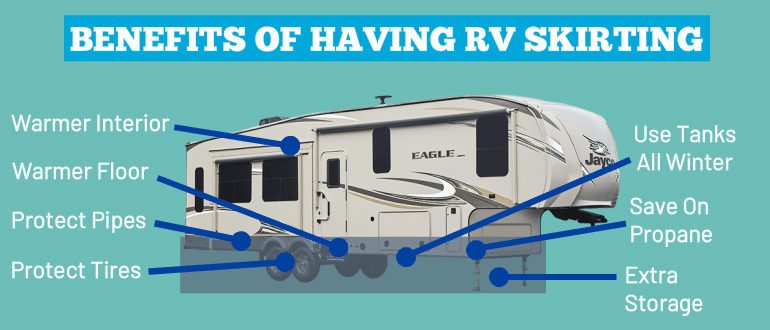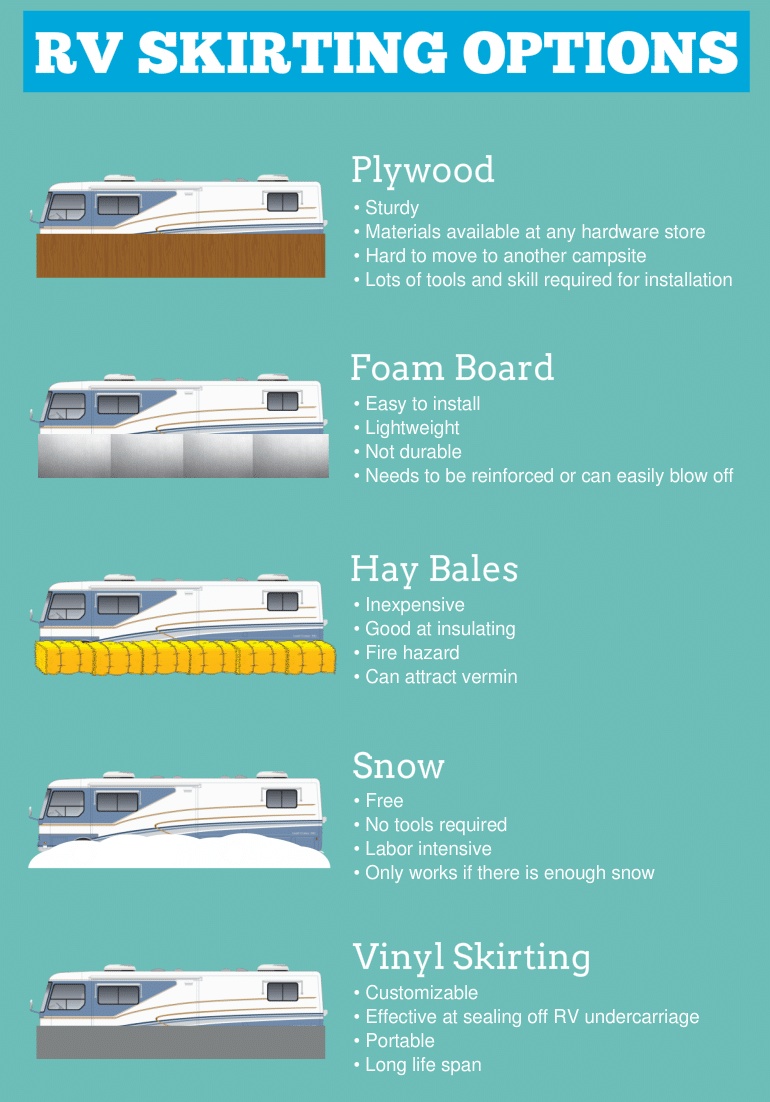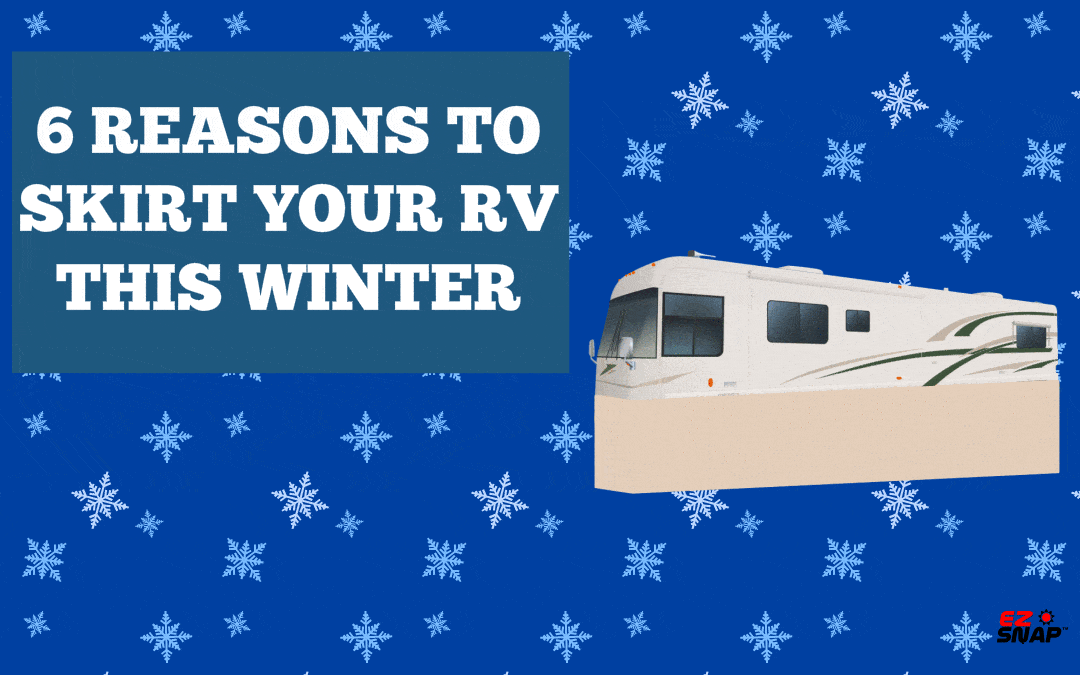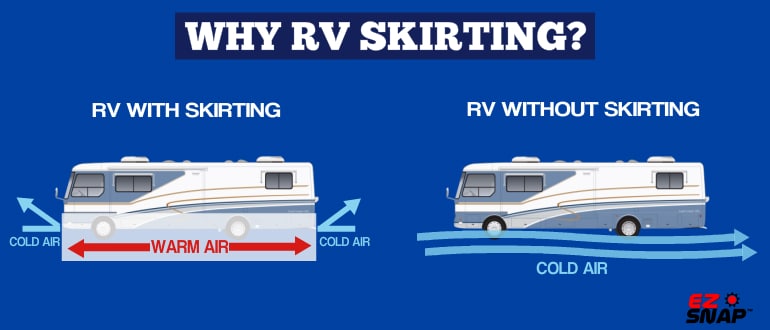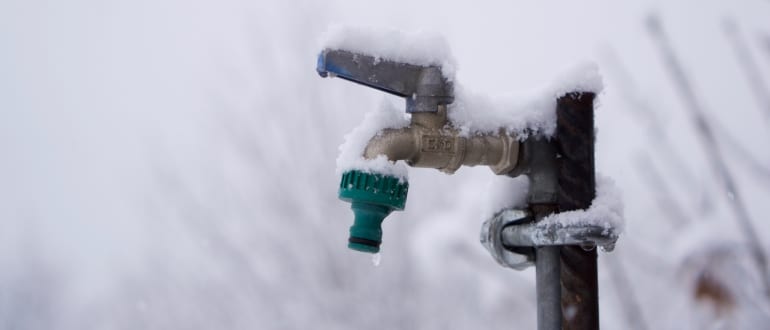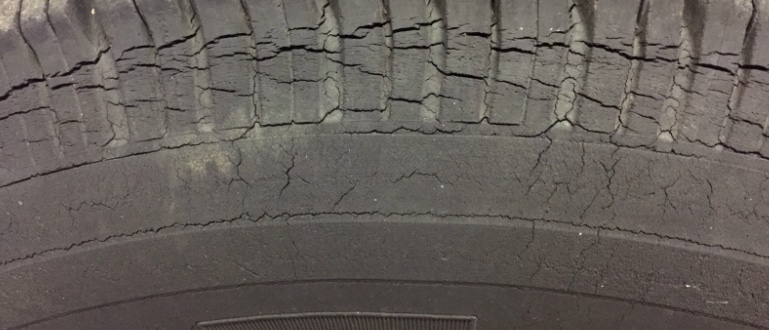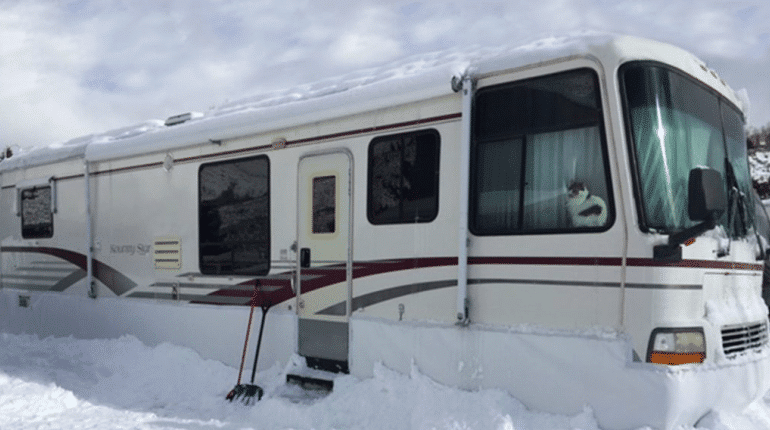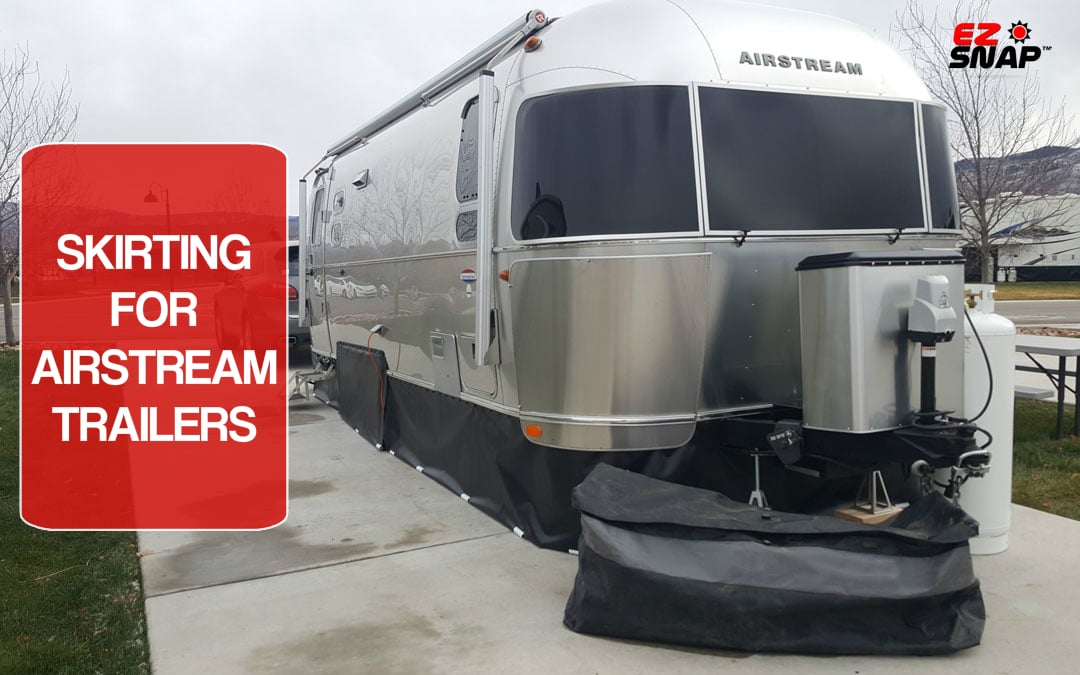If you’re like most people who own an RV, chances are you put your rig away at the onset of cold weather. And it’s a perfectly sensible decision; after all, most RVs are not built to resist freezing temperatures. Staying in an RV can be extremely uncomfortable and even unsafe once the cold weather rolls in.
But if you would love to try winter RVing and maximize the use of your travel trailer or motorhome in the cold months, there’s an easy fix you can try — RV skirting! RV skirting is one of the best and most popular solutions that can make your RV camping comfortable and worry-free.
Installing RV skirting works as the ultimate winter upgrade! It protects your vehicle from the weather by insulating it from the cold in the winter while also keeping the heat and sunlight out in the summer. It’s a simple solution that allows you to use your RV safely and comfortably for long road trips, weekend getaways, or as your year-round residence, regardless of the weather.
EZ Snap is a leading provider of RV skirting solutions that can help you find the best products in this segment. Our top-notch RV skirting products suit various purposes, allowing you to easily find what you need.
In this article, we take a deep dive into RV skirting, including its material types, styles, considerations, and maintenance tips. We also answer a few common questions that you may have about RV skirting and tell you what makes EZ Snap the industry leader in RV skirting solutions.
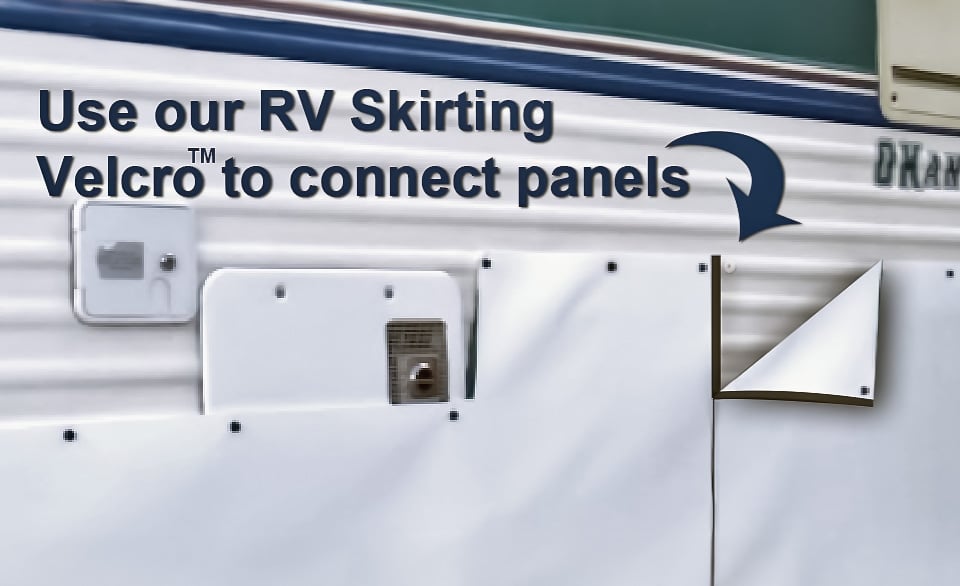
Why EZ Snap?
EZ Snap is North America’s number-one seller of RV skirting solutions. And while there are various types of RV skirts available, our DIY RV skirting kits offer the simplest and most efficient solution to keep your RV safe.
Here are six reasons you should choose us for all your rig needs:
1. Diamond-Weave RV Skirting
We use Diamond-Weave premium vinyl material in our winterizing “DIY” RV skirting kit. This triple-coated material has a diamond-shaped interlaced scrim base that makes it extremely strong and excellent at insulating and has a -40 cold weather rating.
Our skirting is long-lasting, durable, and can withstand up to -40-degree conditions in the winter, which is ideal for places with harsh winters such as Canada and Colorado. Our skirting has also been tested and proven to effectively deal with extreme heat, such as in Arizona or Florida. This material also inhibits harsh UV rays, moisture, mold, mildew, and fading, helping your rig stay hygienic and safe from external elements.
The Diamond-Weave vinyl material is also lightweight and takes up half the storage space compared to regular RV skirting, allowing for easy storage.
2. Non-Fray Fabric
Our RV skirting material is a specialized non-fray fabric that is specially created for skirting and underpinning. The base fabric has a built-in encapsulated yarn, so you can cut it on-site without having to hem its edges. You can install the skirting as it is or cut it into smaller panels for easy use and storage.

3. Simple Installation
Our RV skirting solutions feature a “no-drill” fastening system with a breakthrough 3M® VHB adhesive. This patented fastener has superior holding power, ensuring it stays attached to your RV in extreme hot and cold temperatures without having to drill screw holes or other special tools.
All you must do is peel and stick it on the base of your RV walls. The 3M™ Extreme Hold Technology enables a quick and easy installation process and helps you use the skirting conveniently. You can also watch our tutorial videos or read our instructions to guide you in this process.
You can install the kit whenever you want without waiting for an upholsterer to visit your site, inspect your RV, measure, and install your custom RV skirting. It prevents delays as you can use your RV skirt as soon as it reaches your location.
4. Versatility
Our RV skirting kit is versatile and works well with any RV make, model, size, and style, including Class A and C motorhomes, fifth wheels, and travel trailers.
You can choose a customized skirting solution to suit your RV. You can also select the RV skirting length and the number of slide-outs you need to skirt. Plus, when shopping with us, you get to pick from four attractive colors to match your style and preferences.
5. Affordable Solutions with Quick Order Processing
And if all the benefits we’ve listed above weren’t reasons enough, our RV skirts are also incredibly affordable. We offer high-quality products at wholesale rates, which makes us cheaper than professionally installed options from upholstery shops. By choosing EZ Snap, you can save thousands of dollars and stay within your budget while getting professional results for your RV!
You also don’t have to worry about delays in securing your RV. Our shipping team processes all orders as a top priority and ensures quick and accurate order fulfillment. Ordering early in the fall or even late summer will help you receive your orders even faster.
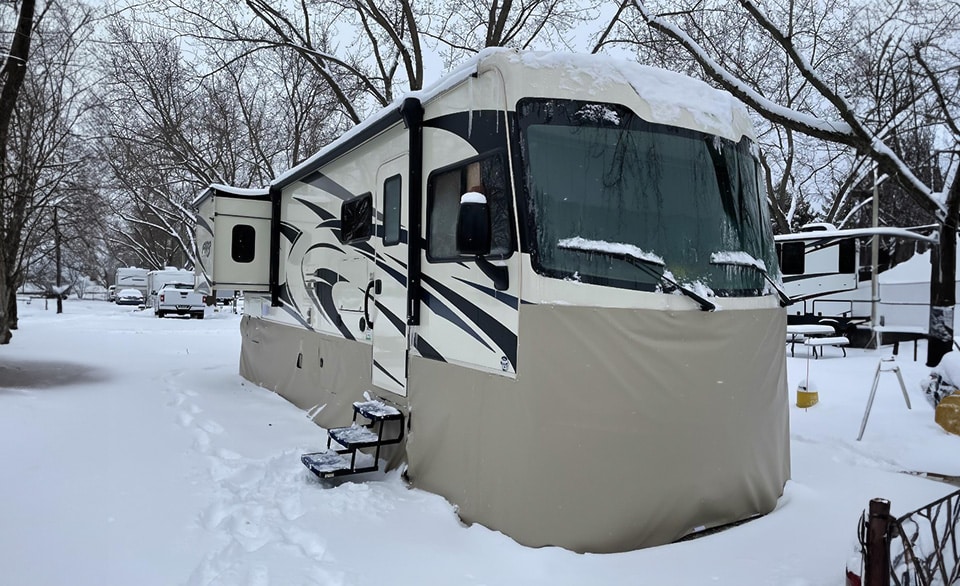
Image Credit: EZSnapDirect.com
Understanding the Basics of RV Skirting
RV skirting is a type of protective material, commonly known as a “skirt,” that covers the base of the RV. It can be crafted from different materials and offers a range of uses. It closes the gap between the RV and the ground, offering greater insulation and enhancing the comfort and safety of the vehicle during both cold and scorching hot weather.
An essential for winter trips, skirting traps heat under the RV and works as a barrier to keep the cold air out. It helps the vehicle maintain a consistent temperature and protects the plumbing so that the tanks and exposed water lines or pipes do not freeze or burst. The insulating properties of the skirting also keep the interior of the RV warm and comfortable.
RV skirting is also necessary for the summer as it helps keep away the heat, too. Since it forms a barrier between the RV and the ground, it ensures that the cold air from your RV’s AC does not escape from the vehicle. This keeps your RV cool, saves on energy bills, and minimizes wear and tear on your cooling systems as they don’t have to work too hard to cool your RV.
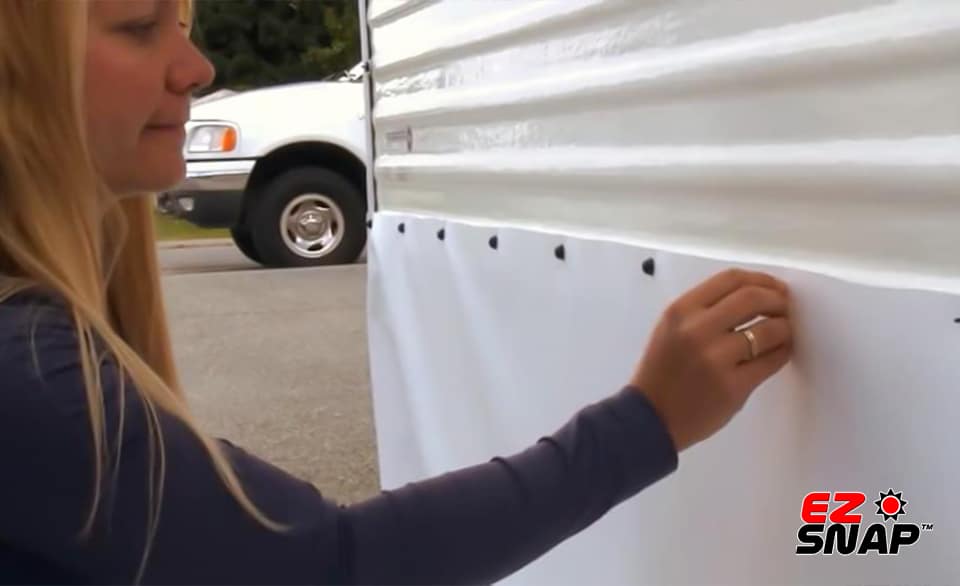
Types of RV Skirting Materials
You can find RV skirts in various materials to suit your needs. Popular materials include vinyl, insulated, plywood, canvas or heavy-duty fabric, and metal. Let’s delve into these five different materials and learn about their pros, cons, and prices to help you choose one for your needs:
1. Vinyl
Vinyl is a popular RV skirting material as it offers a high level of convenience and ease of use while being inexpensive. It looks great, suits various RV styles, and is highly customizable. You can also get heavy-duty options in vinyl that are durable and long-lasting.
Another major advantage of vinyl is that it’s easy to install and maintain, which is ideal for busy RV owners. Its lightweight and portable nature makes storage and transportation a hassle-free task. You can also reuse vinyl skirtings for other purposes, which makes them eco-friendly.
However, vinyl skirtings also have their downsides. Low-quality material can be flimsy and may not withstand strong winds, storms, or running water. Heavy vinyl skirtings also consume more storage space and add to an RV’s weight.
And while vinyl is easy to clean with a mild detergent and water, you need to ensure regular maintenance to help it look good as new and last for years. They do not take well to painting, and regular weeding is necessary to keep away grass and other vegetation.
Some high-end options may seem pricey upfront, but vinyl’s durability helps you save money in the long run.
Pros:
- Affordable
- Easy to install, use, store, and maintain
- Versatile
- Customizable
- Stylish
- Sturdy
- Lightweight
- Portable
- Reusable
Cons:
- Cheap options can be flimsy
- Needs regular cleaning
- Premium products can be costly upfront
Price Range: $150 to $2,000
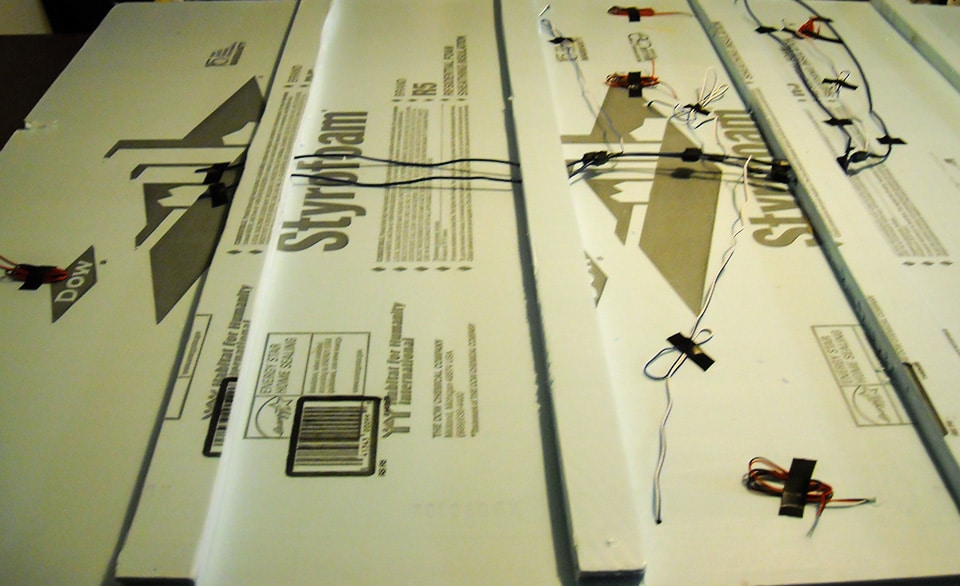
Image Credit: Edward McQueen / flickr
2. Insulated Foam Board
Insulated foam board is another favorite RV skirting material. Not only is it readily available and economical but foam board is also conveniently lightweight, easy to work with (including cutting and installation), and very stylish.
This insulating material is also easy to store and transport. But since it’s super lightweight, you will need to securely attach it with plenty of tape or plywood to your trailer or motorhome to prevent it from flying away with the wind. You can get sturdy options, though, that do not suffer damage easily.
Another drawback of insulated foam board RV skirtings is that they are single-use. So, unless you stay in one spot, you’ll have to buy and install them repeatedly. It will drive up your costs and harm the environment in the long term.
Pros:
- Cost-effective
- Easy to find,
- Convenient to cut and install
- Portable and easy to store
- Elegant
- Lightweight
Cons:
- Needs a secure attachment to the RV to prevent it from blowing away
- Not environment-friendly
- Repeated purchases add to the cost
Price Range: $100 to $200

Image Credit: mtneer_man / flickr
3. Plywood
Plywood is another low-cost and readily available RV skirting material that effectively protects against strong winds. Although it easily adapts to any RV type and model, cutting, installing, and removing plywood involves plenty of work and skill.
If you’re someone who loves taking out your RV frequently, plywood skirting is not a suitable choice for you. Plywood skirtings are heavy and need to be removed and stored before moving, but their inflexibility makes storage difficult as they need plenty of space. They can also get dirty and damaged during transportation.
Many RVers dump their plywood skirtings instead of carrying them along to avoid using up too much space in their RV. So, the reusability of this material is low, which makes it harmful to the environment and costly in the long run.
On the other hand, for stationary RV owners, plywood skirtings are a fantastic option as they last for years without needing replacement. A fresh coat of paint will add to their aesthetic and keep them looking new for a long time.
Although exposure to water or moisture makes them prone to rotting and decay. But using water-resistant materials beneath them can protect them from decay and improve durability.
Plywood skirtings also offer more storage, so you can safely store camping gear and other belongings under your RV.
But it is not highly insulating, so sealing the gaps between boards is necessary for better results.
Pros:
- Protects well against cold winds
- Suitable for RVers parked in one location for prolonged periods
- Durable
- Inexpensive
- Adaptable
- Easy to source
Cons:
- Not very insulating
- Takes time and effort to cut, attach, and remove
- Not great for RVers who frequently change locations
- Can get dirty and damaged during transportation
- Bulky and inflexible
- Needs a lot of storage space
- Not as reusable as other skirting materials on this list
- Can be costly, especially in the long run
- Not eco-friendly
- Not water-resistant
Price Range: $100 to $1,000
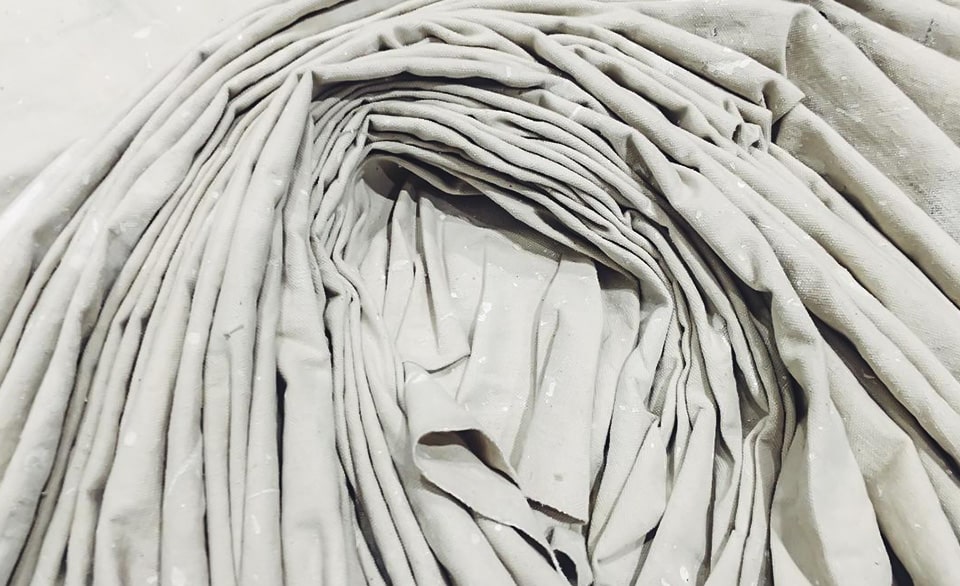
Image Credit: Fernando de Sousa / flickr
4. Canvas/Heavy-Duty Fabric
Canvas and other heavy-duty fabrics are popular and cheap skirting materials that are easy to source, cut, attach, and remove. This makes them ideal for RVers who are frequently on the move.
But you need to securely attach them to your RV using Velcro strips, adhesive tape, suction cups, or grommets. They also do not offer the best insulation and are not long-lasting. So, you will have to replace the skirt once every few years, which can add to your costs and increase waste.
You can opt for recycled canvas fabric skirtings instead to stay sustainable and environmentally friendly.
Pros:
- Readily available
- Easy to cut, install, and remove
- Cost-effective
- Great for RVers who travel a lot
Cons:
- Lacks high insulating properties
- Needs fastening systems for secure attachment
- Not durable
- Not reusable and sustainable
Price Range: $30 to $150
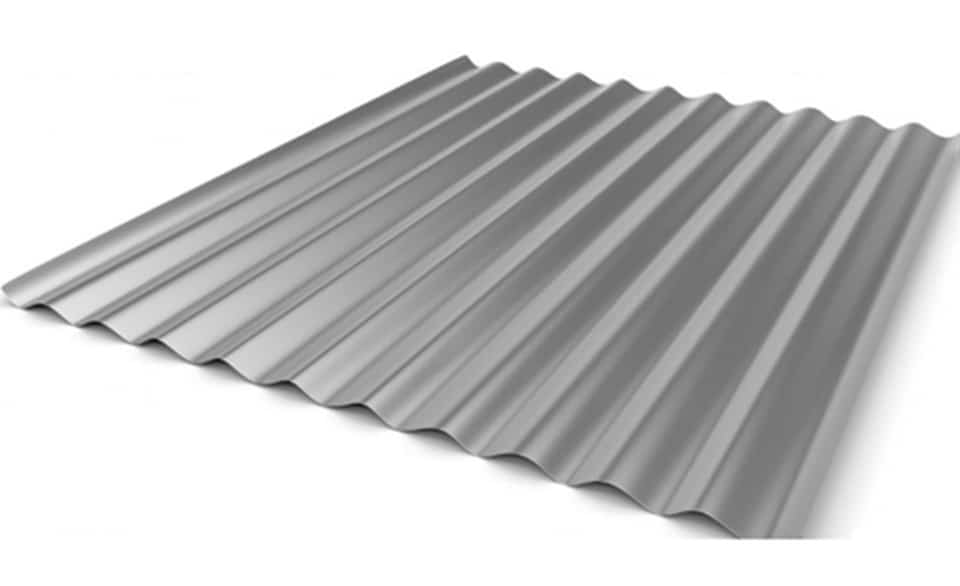
Image Credit: kunal bhosle / flickr
5. Metal
Metal is another common skirting material that is easy to source, install, and disassemble. It is also sturdy and offers reliable protection against cold winds and water.
You can source it in different styles, such as ribbed panels, that you can paint in your favorite color. Ribbed panels are also available in a range of colors with a warranty against color fading. Corrugated panels are another classic metal skirting style that offers a shiny appeal, while thick panels provide extra strength.
But it should be noted that metal skirtings can rust or corrode, so applying a fresh layer of paint whenever it fades is important. And depending on the type of metal you choose the skirting you opt for can be affordable or expensive. So, choose a metal that suits your budget and needs.
Pros:
- High strength
- Protects against wind and water
- Readily available
- Easy to assemble and disassemble
- Economical
- Available in different styles to suit various purposes
Cons:
- Prone to rust and corrosion
- Needs maintenance
- Can come at a high price point
Price Range: $500 to $2,000
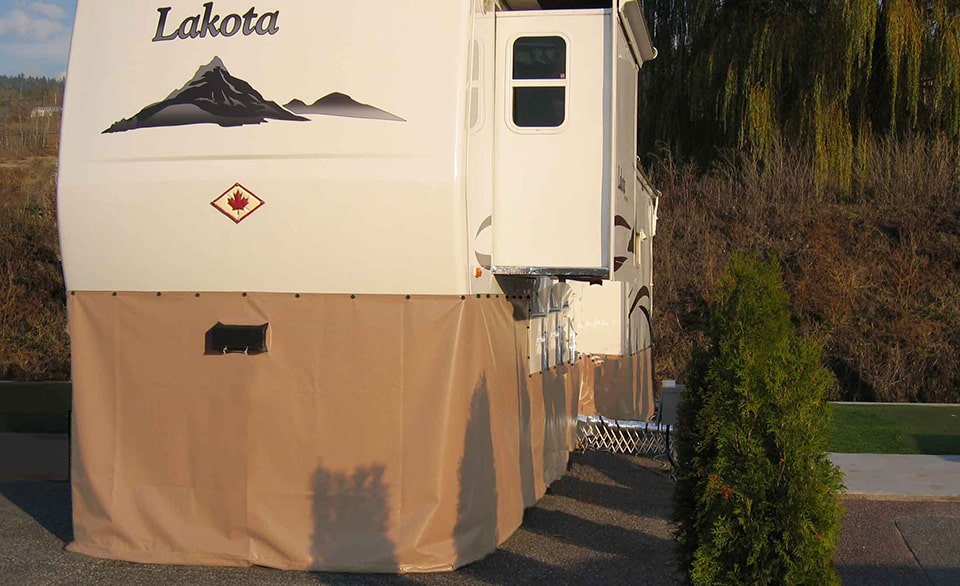
Image Credit: EZSnapDirect.com
Choosing Your RV Skirting Style
There are a couple of RV skirting styles you can pick from, which include the following:
1. Custom-Fit RV Skirting
If you opt for a custom-fit RV skirting solution, a custom skirting provider will visit your location and measure your RV. They will then produce the skirting as per your specifications and install it on your RV at their shop or your site.
This skirting style offers high convenience to RVers as they can sit back and relax while a professional fits the skirting onto their RV. It also looks great and is reusable, which maximizes the return on investment. But this option is often quite costly, which makes many RVers prefer installing their skirts on their own.
You may also have to travel to the company’s shop for a consultation or to get the skirt installed.
Suitability: Great for stationary RVers with a high budget
Price Range: $1,500 to $3,000
2. DIY RV Skirting
DIY RV skirting offers a budget-friendly alternative to custom-fit skirtings. You can source the materials from different suppliers or opt for EZ Snap’s DIY skirting kits. While going it alone can be challenging, buying our kits simplifies the assembly process.
We will send you all the materials and hardware you need to install your RV skirting right to your doorstep. You can also find installation tutorial videos and guides on our website to ease the process for you.
Our kit helps you avoid the risk, stress, and hassle of figuring out everything alone. They will also help you take advantage of an affordable price point while ensuring the quality and durability of your skirting.
Suitability: Budget-conscious and quality-conscious RVers
Price Range: $500 to 2,000
 Image Credit: Adam Peterson, CC BY-SA 4.0, – Wikimedia Commons
Image Credit: Adam Peterson, CC BY-SA 4.0, – Wikimedia Commons
Key Factors to Consider When Choosing Your RV Skirting
Look at some important elements to consider when selecting your RV skirting:
1. Climate
The climate where you live and where you will travel is the topmost consideration when choosing RV skirtings. Snowy weather conditions call for heavy-duty insulation. Meanwhile, sunny climates need UV-resistant and fade-resistant skirting solutions that protect the underbellies of RVs.
2. Budget
Pricing is another factor you must consider when picking an RV skirt. Choose skirting material and style that fits within your budget. You can get high-quality options that cost hundreds and thousands of dollars or cheaper stuff for less than $100.
You will also need to track shipping fees. Bulky or fragile skirtings come with high delivery fees, whereas durable or lightweight skirtings may have lower shipping charges. Look for free shipping to help you save more money.
3. Maintenance and Durability
Durability and maintenance are other factors to consider when buying RV skirtings. Durable and low-maintenance skirtings like those made of vinyl and metal are better than fabric-based or foam-based options. Durable materials will cost more initially, but they will help you save money in the long run.
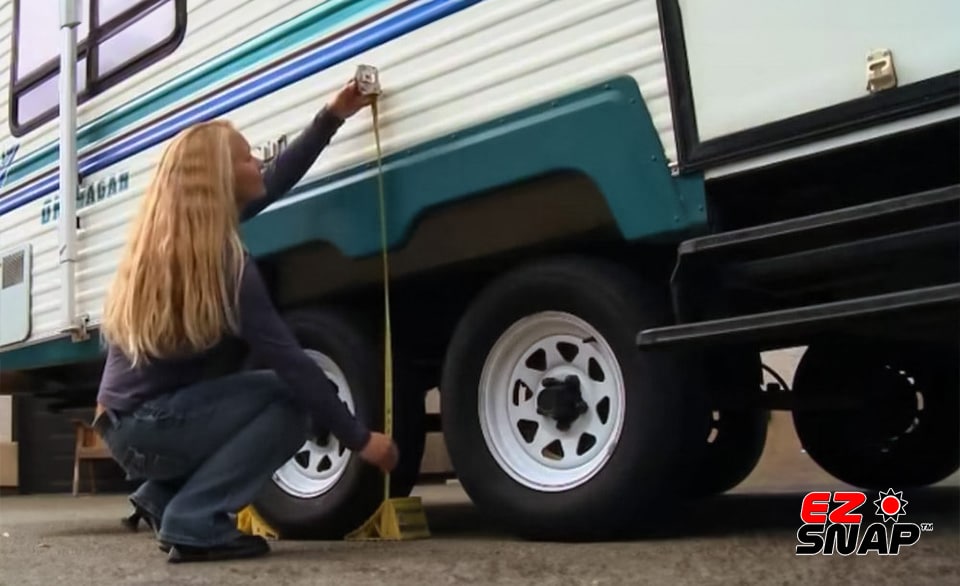
4. Ease of Installation
Installing your RV skirt should be easy and hassle-free. It should be quick and not require too many special tools. EZ Snap’s DIY kits simplify the installation process by making it quick and simple. We use a special adhesive and avoid the use of drills, screws, and other tools. Moreover, our kits are easy to store and transport.
Maintaining Your RV Skirting: Tips and Suggestions
Here are a few tips to help you care for your RV skirting and reduce replacement and repair costs:
- Install the skirting correctly and ensure proper ventilation to avoid moisture buildup and prevent mold or mildew growth.
- If you have vinyl skirting like those from EZ Snap, clean it occasionally with mild detergent and water and avoid painting it.
- Repaint metal skirtings when their paint comes off to combat rust and corrosion.
- Use water-resistant materials under plywood skirtings to prevent rotting.
- Regularly remove nearby weeds and other vegetation to help your skirting last longer.
Conclusion
RV skirtings are excellent insulating solutions that create a protective barrier for your motor homes. They are also available in a range of materials and styles, so you can easily choose one that fulfills your needs.
EZ Snap’s non-fray RV skirting kits are a leading skirting solution as they are durable, weather-resistant, versatile, affordable, lightweight, and easy to install, use, and store. We also ship orders quickly, preventing delivery delays and avoiding any inconvenience to you. Visit our website for more information and browse our range of skirting solutions.
Frequently Asked Questions (FAQs)
Why is RV skirting necessary?
RV skirtings create a barrier around an RV’s underbelly to keep the cold and heat out and protect it in harsh weather conditions. They help protect the RV’s plumbing, maintain an optimal temperature inside the RV, and keep heating bills low in the winter.
What type of RV skirting material is best for cold climates?
Any insulating or protective material like vinyl, foam board, plywood, metal, or heavy-duty fabric is suitable for cold climates.
How much does it cost to skirt an RV?
RV skirting typically costs $100 to $3,000 or even $7,000. Custom-made skirting comes with hefty price tags, while readymade or DIY kits are cheaper.
The DIY versions, such as EZ Snap’s RV skirting solutions, are the most cost-effective options among RV skirtings. Depending on the size and type of the RV and the number of slide-outs, they cost $1,000 or even less. The EZ Snap RV Skirting Cost Calculator will help you quickly determine the cost of skirting for your RV.
Can I install RV skirting myself?
Yes, you can get custom self-installed DIY kits like those from EZ Snap. We send you all the materials and hardware you need to install your premium vinyl RV skirting on your own, making self-installation easy and quick.
How should I maintain my RV skirting from EZ Snap?
EZ Snap’s DIY RV skirting kits do not need much maintenance. Although periodic cleaning with a mild detergent or soap and water will help them last longer.
